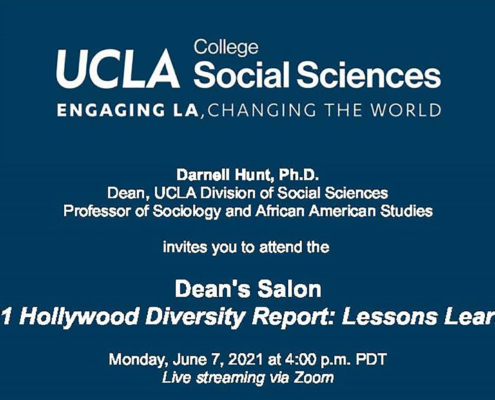Posts

UCLA Social Sciences Dean’s Salon Presents “2021 Hollywood Diversity Report: Lessons Learned” on June 7
Darnell Hunt, Ph.D.
Dean, UCLA Division of Social Sciences
Professor…

LA Social Science Book Series on Boundaries and Authority in Muslim and Christian Schools with Professor Jeffrey Guhin
In Dr. Jeffrey Guhin's book, Agents of God: Boundaries and…

CSW Gender, Race, and Age Behind Bars: Impacts of Long-Term Sentencing Event on Feb. 3
UCLA Center for the Study of Women Presents:
GENDER, RACE,…

LA Social Science Summer Course Previews: American Cultural History with Professor Avila
As summer 2020 approaches, LA Social Science will be highlighting…

A New Perspective on Gender Neutrality…Continued
UCLA professors Abigail C. Saguy and Juliet A. Williams recently…

Visual Representation and Gender Fit in the Workplace
INSEAD, The Business School for the World, “brings together…

A New Perspective on Gender Neutrality
UCLA Professors Abigail C. Saguy and Juliet A. Williams from…

Policing’s Role in Racial Segregation: 50 Years After the Fair Housing Act
By Rahim Kurwa Assistant Professor, University of Illinois…

Coming Out and “Outing Pigs”
By Abigail C. Saguy Professor of Sociology, UCLA In…

